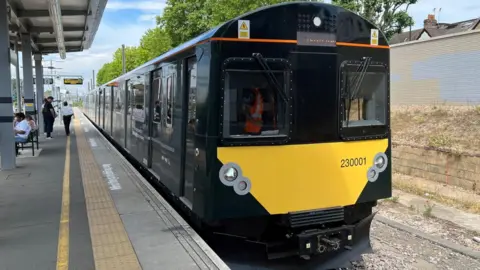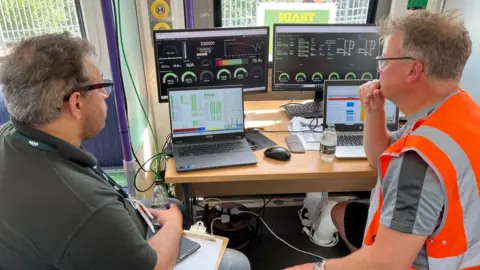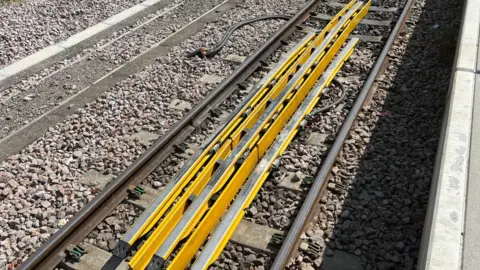GWR battery-powered trains could be used in future
 BBC
BBCBattery-powered trains could be used more frequently after a successful trial by Great Western Railway (GWR).
The rail company says using former underground trains and a rapid-charging system has shown the technology could replace its existing diesel fleet.
The year-long trial was held in west London but the trains will eventually be rolled out in the Thames Valley.
GWR says it can now prove the concept works and hopes to take the initiative to government.

GWR's railway franchise includes the west and south west of England, as well as routes between London and Didcot, Oxford, Reading and Windsor.
The trains use an onboard FastCharge battery that delivers the equivalent of a full charge for a car in 85 seconds.
Engineering director Simon Green said: "...we are at a position where we understand how the technology works, the fact the technology can work in many different contexts as well.
"Going forward, we think it's a viable technology for application across wider parts of the Great Western network and the national UK rail network as well."

The rapid charging system works by installing huge trackside batteries, which are cheaper than fitting overhead wires.
When the train pulls into the station, two shoes are extended to live rails between the tracks, topping up the onboard batteries.
An executive summary of the trial from GWR said: "The success of the trial allows GWR to look more confidently at a future without diesel, providing alternative options that are cheaper to deliver while achieving the common goal of a cleaner, greener railway."
You can follow BBC Berkshire on Facebook, X, or Instagram.
